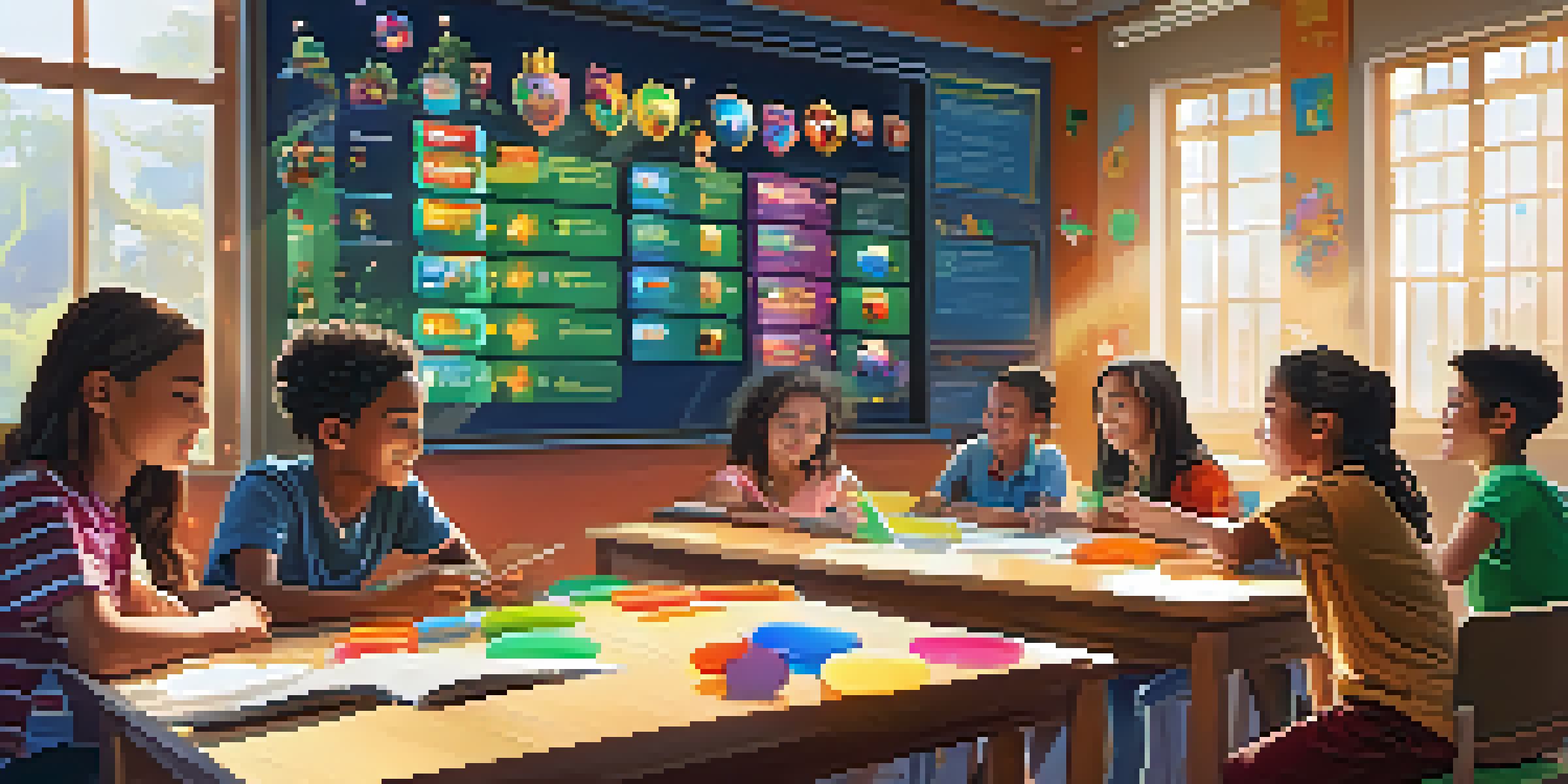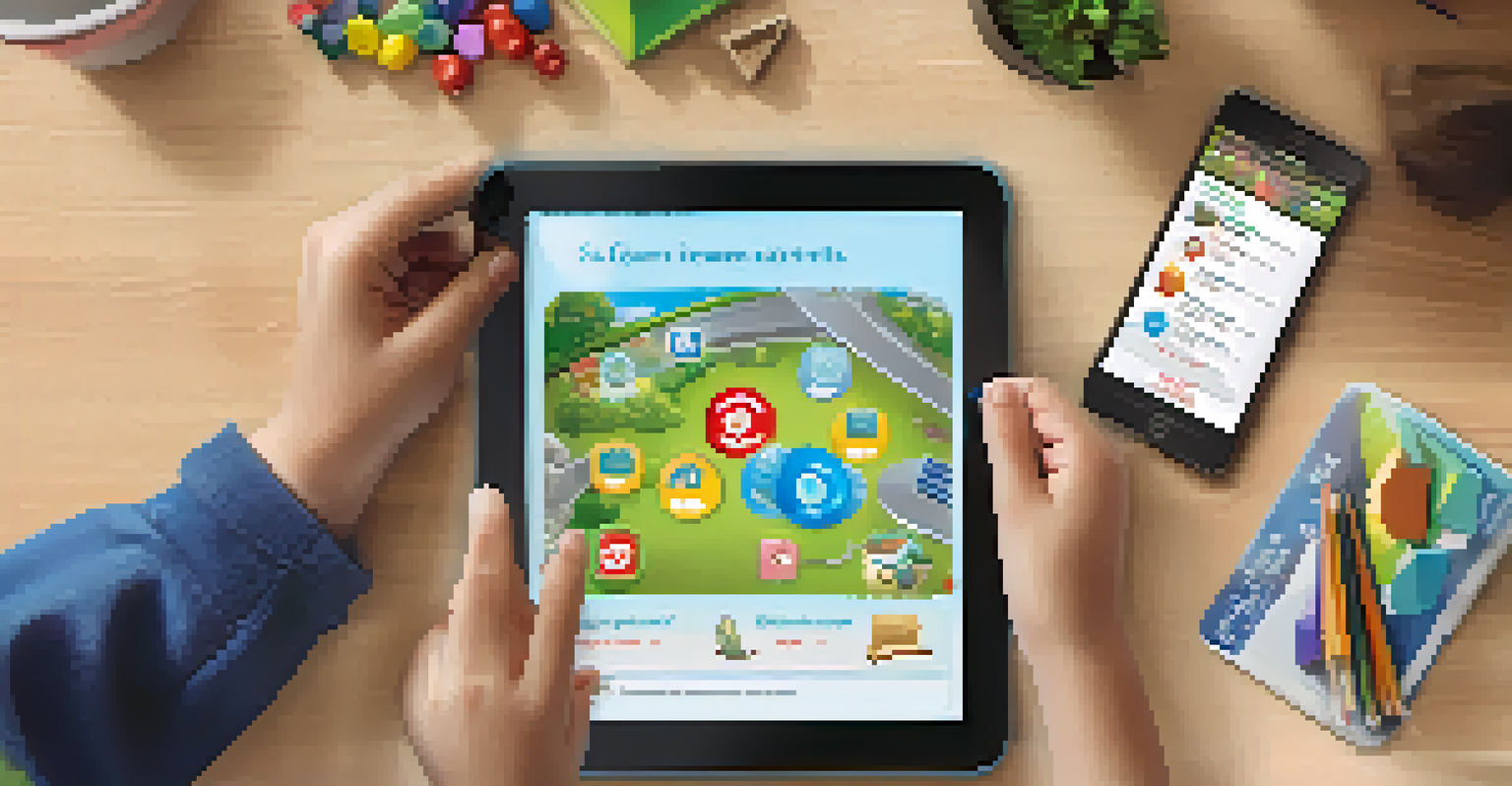Exploring the Role of Gamification in Distance Learning Success

Understanding Gamification and Its Importance
Gamification refers to the incorporation of game-like elements into non-game contexts to enhance engagement and motivation. This approach can be particularly powerful in distance learning, where students might struggle with motivation due to the lack of physical presence. By introducing elements like points, badges, and leaderboards, educators can create a more interactive and enjoyable learning experience.
Gamification can transform the mundane into the magical, creating an engaging learning experience that motivates students to participate.
The importance of gamification in education lies in its ability to transform traditional learning methods into something more dynamic and engaging. When students are rewarded for their achievements, they are more likely to stay focused and committed to their studies. This not only enhances their learning experience but also encourages a sense of competition and camaraderie among peers.
In a nutshell, gamification can help bridge the gap in distance learning by making education more appealing. It encourages students to actively participate in their learning journey, fostering a sense of ownership and responsibility towards their education.
Enhancing Engagement Through Game Mechanics
Game mechanics such as challenges, rewards, and narratives can significantly boost student engagement. For example, by incorporating challenges that require problem-solving or critical thinking, educators can stimulate students' minds while keeping them entertained. This not only makes learning fun but also encourages deeper understanding and retention of the material.

Additionally, the use of rewards, such as points for completing tasks or badges for achievements, can motivate students to push through difficult content. When learners see tangible rewards for their efforts, it fosters a sense of accomplishment and encourages them to continue participating in the course. This cycle of motivation and reward can lead to improved academic performance.
Gamification Boosts Engagement
Incorporating game-like elements in education enhances student motivation and creates a more interactive learning environment.
Furthermore, narratives or storylines in gamified learning can capture students' attention and immerse them in the subject matter. When learners feel like they are part of a story, they are more likely to remain engaged and invested in their education.
Fostering Collaboration and Community Among Learners
Gamification can also play a crucial role in fostering collaboration among students, even in a virtual environment. By implementing team-based challenges or collaborative projects, learners can engage with one another and build a sense of community. This interaction is essential for distance learning, where isolation can often hinder motivation and progress.
The best way to predict the future is to create it.
Creating opportunities for peer-to-peer interaction through gamified elements encourages students to share ideas and support one another. This not only enhances their understanding of the material but also builds valuable communication skills that are essential in today’s workforce. Collaborative gamified tasks can help students feel more connected and less isolated.
In essence, gamification not only enhances individual learning but also nurtures a collaborative spirit among learners. By cultivating a community where students feel connected and supported, educators can create a more enriching distance learning experience.
Personalizing the Learning Experience
One of the standout features of gamification is its ability to personalize the learning journey for each student. Through adaptive learning technologies, educators can tailor challenges and tasks based on individual student performance. This ensures that learners are neither overwhelmed nor bored, enhancing their overall experience.
Personalization through gamification allows students to progress at their own pace, which is particularly beneficial in a distance learning environment. When students can choose the challenges they want to tackle, it fosters a sense of autonomy and empowerment. They are more likely to engage deeply with the material when they feel their learning path is tailored to their needs.
Fosters Community and Collaboration
Gamification encourages teamwork and peer interaction, helping to build a sense of community among distance learners.
Moreover, personalized gamified experiences can help educators identify students who may need additional support. By tracking progress and engagement levels, teachers can intervene early, ensuring that all students have the opportunity to succeed.
Improving Knowledge Retention and Application
Gamification not only enhances engagement but also plays a significant role in improving knowledge retention. Research shows that when learners are engaged in interactive activities, they are more likely to remember the information being taught. The combination of fun and challenge helps solidify concepts in students' minds.
Additionally, applying knowledge in a gamified context allows students to see its relevance in real-world situations. For instance, using simulations or role-playing games can provide learners with hands-on experience, making abstract concepts more concrete. This practical application reinforces understanding and promotes critical thinking.
In summary, by incorporating gamification into distance learning, educators can create a more effective environment for knowledge retention and application. This ultimately leads to a deeper understanding of the subject matter and better prepares students for future challenges.
Challenges of Implementing Gamification in Distance Learning
Despite its benefits, implementing gamification in distance learning is not without challenges. One major hurdle is the potential for technology barriers; not all students may have equal access to the required tools or platforms. This can create disparities in engagement and learning outcomes, which educators must address.
Another challenge is ensuring that gamified elements do not overshadow the educational content. While game mechanics can enhance engagement, they must align with learning objectives. If students focus too much on earning points or badges, they may lose sight of the actual material, leading to superficial learning.
Personalized Learning Experiences
Through adaptive challenges, gamification allows educators to tailor learning paths to individual student needs, promoting autonomy and engagement.
To overcome these challenges, educators need to strike a balance between gamification and traditional teaching methods. By thoughtfully integrating gamified elements, they can create an inclusive environment that promotes engagement without compromising on educational quality.
Future Trends in Gamification for Distance Learning
As technology continues to evolve, so too will the landscape of gamification in distance learning. Emerging technologies like virtual reality (VR) and augmented reality (AR) are poised to create even more immersive educational experiences. Imagine students exploring historical sites through VR while completing gamified tasks—it's an exciting prospect!
Additionally, artificial intelligence (AI) can play a role in personalizing gamified learning experiences even further. AI can analyze student data and adapt challenges in real-time, ensuring that each learner receives the most effective educational experience tailored to their needs.

Looking ahead, the integration of these advanced technologies can make gamification an even more powerful tool in distance learning. By staying attuned to trends and innovations, educators can harness the potential of gamification to continuously enhance learning outcomes.